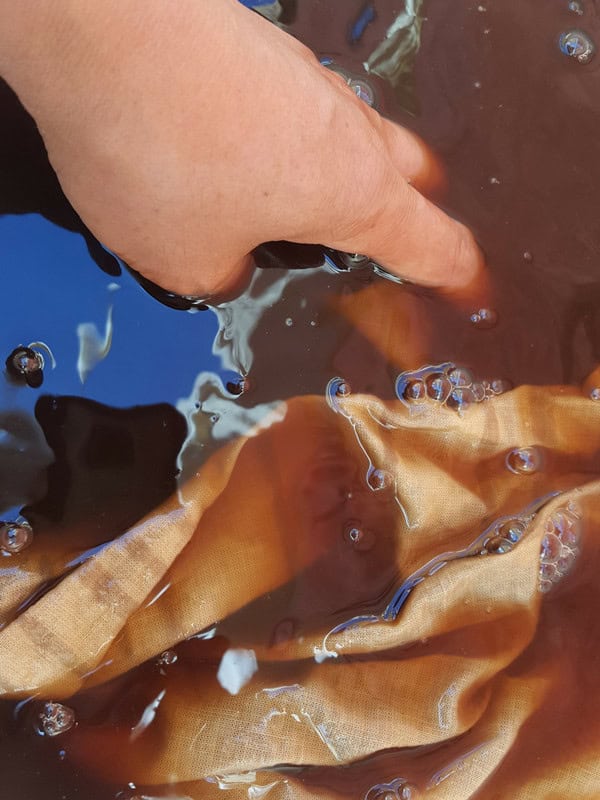This week: Chemical reactions in a mordant bath and liquid dyes for watercolor painting
Every week, we are emailed with questions from our natural dye community asking simple and complex questions that we thought might be worth sharing. Of course, all of your burning questions are answered by natural dyer in chief, Kathy Hattori, Founder of Botanical Colors.
I have mordanted some 100% silk with aluminum sulfate, 12% WOF with the heat method. I left the silk in the mordant for a couple of days by accident and now have yellow stains in random places on my fabric . It appears to be some kind of oxidation reaction as it was mostly the bits out of the water in contact with the air. I can’t find any info on anyone else having the same results and tried to wash it with no success. Any tips to recover the fabric or reasoning behind it? frustrated and baffled.
Sorry to hear about the mordant problems. We recommend submerging fabrics totally under water if you need to leave a mordant bath unattended and also covering the mordant pot to avoid inadvertent contamination from dust or dye powders and protection from excessive light. I know from the sorry experience of seeing tiny little cochineal extract speckles all over a t-shirt that was supposed to be dyed yellow that covering the mordant pot is important. Dye powder particles are lightweight and can really waft. From what you are describing, you are correct: some chemical reaction occurred and caused a yellow mark – possibly a sulfur-based reaction, but a friendly chemist among our followers might have the answer for us. You might try to gently bleach the fabric with hydrogen peroxide but avoid the use of chlorine bleach as it will damage the fiber.
Can I use Aquarelle Liquid dyes to paint on water color paper?
If you want to use liquid natural dyes to paint or print, you can either use the color right out of the bottle (shake well first) but be aware that it isn’t really a paint and that it may fade or change color with time because there is nothing that is “fixing” the color to the paper. Typically paints and watercolors are made so that the color is bound to an insoluble medium such as chalk and turned into a lake. We have a great new book about plant and foraged inks (and watercolor) called Make Ink and it is a marvelous reference to creating your own paint colors.
Related links:
Dyeing cotton paper with cochineal
Going ‘Underfoot’ With Natural Dye & Textile Artist Brece Honeycutt

